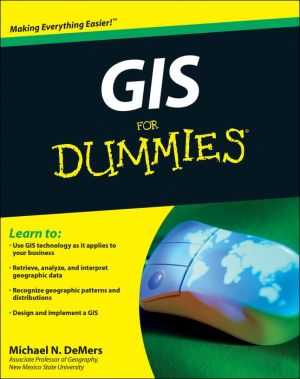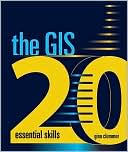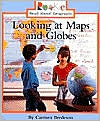GIS for Dummies
GIS (geographic information system) is a totally cool technology that has been called “geography on steroids.” GIS is what lets you see the schools in your neighborhood or tells you where the nearest McDonald’s is. GIS For Dummies tells you all about mapping terminology and digital mapping, how to locate geographic features and analyze patterns such as streets and waterways, and how to generate travel directions, customer location lists, and much more with GIS.\ Whether you’re in charge of...
Search in google:
Curious about GIS?Organizing a GIS? Here's the book you need! Geographic information system, or GIS, is a powerful technology that has been called "geography on steroids." This book contains what you need to know on mapping terminology and digital mapping, how to locate geographic features and analyze their patterns, and how to generate travel directions, customer locations lists, and much more with GIS. GIS takes a village — know all the hardware and software necessary to collect, analyze, and manipulate GIS dataJust for map mavens — explore the difference between 2D and 3D maps, create a map, or manage multiple mapsWhat the data mean — analyze patterns that appear in maps and interpret the resultsThink spatially — recognize how spatial factors relate to geographic data On the grid — define and locate geographic objects on the gridThe earth is not flat — accurately portray geographic features with map projectionsTechnological duct tape — discover the many uses of GIS for business, the military, city planning, emergency services, land management, and moreDesign a GIS — determine what your organization needs, do appropriate analyses, and plan your system Open the book and find: How to get paper maps into your computerDifferent ways to measure distance How to organize your spatial dataWhat raster and vector mean to a cartographerHow to choose a GIS software vendorHow GIS can help you determine appropriate land useDozens of applications for GIS queries and analysesHow to create animated GIS output
Introduction. Part I: GIS: Geography on Steroids. Chapter 1: Seeing the Scope of GIS. Chapter 2: Recognizing How Maps Show Information. Chapter 3: Reading, Analyzing, and Interpreting Maps. Part II: Geography Goes Digital. Chapter 4: Creating a Conceptual Model. Chapter 5: Understanding the GIS Data Models. Chapter 6: Keeping Track of Data Descriptions. Chapter 7: Managing Multiple Maps. Chapter 8: Gathering and Digitizing Geographic Data. Part III: Retrieving, Counting, and Characterizing Geography. Chapter 9: Finding Information in Raster Systems. Chapter 10: Finding Features in Vector Systems. Chapter 11: Searching for Geographic Objects, Distributions, and Groups. Part IV: Analyzing Geographic Patterns. Chapter 12: Measuring Distance. Chapter 13: Working with Statistical Surfaces. Chapter 14: Exploring Topographical Surfaces. Chapter 15: Working with Networks. Chapter 16: Comparing Multiple Maps. Chapter 17: Map Algebra and Model Building. Part V: GIS Output and Application. Chapter 18: Producing Cartographic Output. Chapter 19: Generating Non-Cartographic Output. Chapter 20: GIS in Organizations. Part VI: The Part of Tens. Chapter 21: Ten GIS Software Vendors. Chapter 22: Ten Questions to Ask Potential Vendors. Chapter 23: Ten GIS Data Sources. Index.








